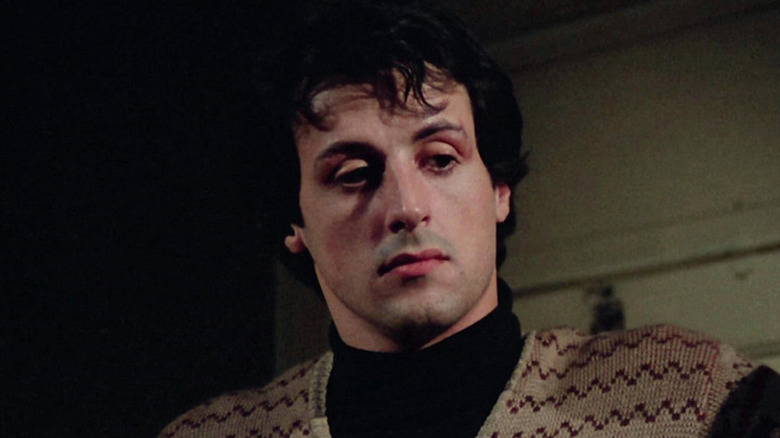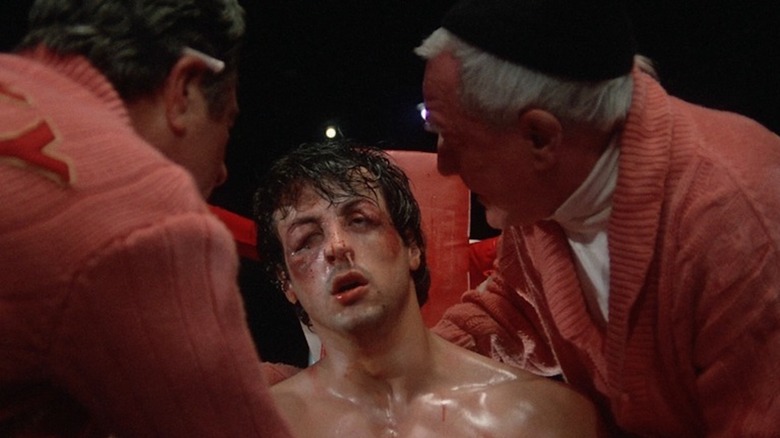Rocky's Tight Budget Meant Sneaking The Film's Crew Into Philadelphia
John G. Avildsen's "Rocky" is one of Hollywood's greatest underdog tales, both onscreen and off. The film was a surprise pop-cultural phenomenon in 1976, about a club boxer, Rocky Balboa (Sylvester Stallone), getting a surprise shot at the heavyweight championship by the overconfident Apollo Creed (Carl Weathers). It was the top-grossing movie of the year, and shocked the world by winning the Best Picture Oscar over incredibly stiff competition like "Taxi Driver," "All the President's Men," and "Network."
Before the plaudits and box office success, "Rocky" was a Hail Mary pass from a struggling actor who decided to make his own luck by writing a boxing drama inspired by Muhammad Ali's fifteenth-round TKO of Chuck "The Bayonne Bleeder" Wepner. Ali was heavily favored to put the journeyman fighter away early, but he gutted it out and nearly went the distance. Stallone claims he wrote the first draft of the script in three days, and soon found himself fielding offers from studios for his heartfelt work. Stallone could've made a quick sale if he'd been okay with Burt Reynolds or Robert Redford playing the Italian Stallion, but he held out until producers Irwin Winkler and Robert Chartoff agreed to let him star.
In doing so, Stallone and Avildsen found themselves strapped with a rough $1 million budget. Given that they had their hearts set on shooting in Philadelphia, this meant they had to make some unfortunate compromises.
A non-union New York crew in Philadelphia
In an oral history of "Rocky" for Philadelphia Magazine, John Avildsen revealed that the City of Brotherly Love was a "Goldilocks kind of town" for their tale. Talia Shire, who played Rocky's beloved Adrian, added that the timing was too perfect. "Never forget that this was supposed to be a celebration in the birthplace of America — 1776, 1976. You can't forget that. Because that is the frame around this mythological piece that gave it its mythos."
There was just one problem: Winkler and Chartoff couldn't afford to send a Los Angeles-based union crew to shoot on location in Philly. Avildsen had no intention of shooting anywhere else, so he floated an alternative. "[I] told them I had a terrific non-union crew from New York that we could sneak in. So that's what we did. We started shooting on November 5, 1975."
It's an unfortunate reality of the business, but further to Shire's point, there's no more appropriate way to celebrate the United States than making a classic American film with a non-union crew.

